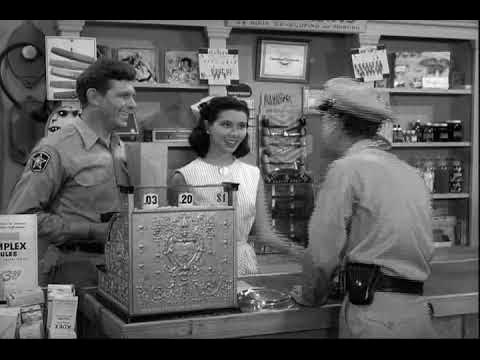
Can Beauty and Ethics Coexist in Mayberry?
The very name "Mayberry" conjures an image as clear and sweet as a dewdrop on a honeysuckle vine: sun-dappled streets, the gentle strum of a porch-swing guitar, and the comforting rhythm of lives lived in harmony. It is a place, if fictional, that embodies an almost idyllic beauty—a pristine aesthetic of simplicity, neighborliness, and unhurried charm. But beyond the visual and auditory poetry of this small North Carolina town, a deeper question emerges: Does this surface beauty merely conceal a lack of ethical depth, or can the two, in Mayberry, truly coexist, perhaps even nurture one another? An illustrative journey into Mayberry reveals that not only do beauty and ethics coexist, but they are, in fact, inextricably intertwined, forming the very fabric of its enduring appeal.
The beauty of Mayberry is, first and foremost, an aesthetic one, a testament to a less complicated time. It manifests in the visual tableau: the impeccably maintained courthouse, the barbershop where news is shared more readily than haircuts, the fishing hole where Opie and Andy cast lines into tranquil waters. It is the beauty of a pace of life dictated by the sun's arc and the changing seasons, not by the relentless tick of a clock. There’s a certain pastoral grace in Aunt Bee’s freshly baked pies cooling on a windowsill, in the unhurried discussions on a park bench, in the familiar, comforting sight of Andy Taylor’s cruiser patrolling the quiet streets. This is a beauty born of order, cleanliness, and a profound sense of belonging, a visual symphony of gentle existence.
Yet, this aesthetic beauty is merely the outward expression of Mayberry’s profound ethical core. The moral compass of the town, embodied by Sheriff Andy Taylor, is not rooted in rigid laws or punitive justice, but in common sense, empathy, and a deep understanding of human nature. Andy’s ethical approach is one of gentle guidance, often choosing a quiet conversation over a jail cell, a life lesson over a harsh penalty. When Otis Campbell, the town drunk, stumbles into the jail for a voluntary overnight stay, it’s not just a comedic running gag; it's an illustration of an ethical system that prioritizes safety and understanding over humiliation. The "jail" becomes a safe harbor, a place for consequence without cruelty, embodying a beautiful form of compassionate justice.
Consider the countless episodes where a conflict arises, often due to a misunderstanding, a minor transgression, or a moment of pride. Whether it’s Opie’s youthful missteps, Barney’s overzealous attempts at law enforcement, or a well-meaning but misguided citizen, Andy consistently steers the situation towards an ethical resolution that prioritizes reconciliation over retribution. He teaches, he guides, he facilitates. This isn't just about "fixing" a problem; it's about preserving the delicate social fabric of the community. The honesty he instills in Opie, the patience he extends to Barney, the gentle hand he offers to new arrivals—these are not just ethical principles; they are acts that create a beautiful community. The beauty of Mayberry, therefore, is not just its clean streets but its clean conscience, not just its tranquil lakes but its tranquil spirit.
Indeed, in Mayberry, ethics doesn’t just coexist with beauty; it cultivates it. A community where people genuinely care for one another, where gossip gives way to helpfulness, where misunderstandings are resolved with grace—such a community is inherently beautiful. The sense of trust that pervades Mayberry, the unspoken agreement to look out for one another, the collective desire for peace and harmony, are the ethical foundations upon which its picturesque charm is built. Without Andy's steady moral hand, without Aunt Bee's nurturing spirit, without Barney's earnest (if sometimes clumsy) attempts to do right, the bucolic façade would crumble. The beautiful Mayberry we know could not exist without its unwavering ethical underpinnings.
Of course, Mayberry is an idealized construct, a nostalgic mirror reflecting a simpler America. It rarely grapples with the complexities of modern social issues, systemic injustices, or profound moral dilemmas that challenge the very fabric of larger societies. Its beauty and ethics flourish within a contained, relatively homogenous environment, where problems are often neatly tied up in 22 minutes. Yet, this very idealization serves as a powerful illustration. It suggests that when a community prioritizes empathy, common sense, and mutual respect—the core tenets of Mayberry’s ethics—a kind of inherent beauty, both visual and spiritual, blossoms.
In conclusion, the question of whether beauty and ethics can coexist in Mayberry is answered with a resounding affirmative. They are not separate entities tolerating each other's presence; they are two sides of the same coin, each defining and enhancing the other. The aesthetic charm of Mayberry—its gentle landscapes, its quaint customs, its unhurried pace—is a direct manifestation of its robust ethical framework. And conversely, the ethical principles embodied by Andy Taylor and practiced by its citizens, such as compassion, honesty, and community responsibility, are what make the town truly beautiful. Mayberry stands as an illustrative beacon, reminding us that true beauty is not merely skin-deep; it resonates from the moral heart of a place, a quiet symphony where goodness and grace play in perfect, enduring harmony.
